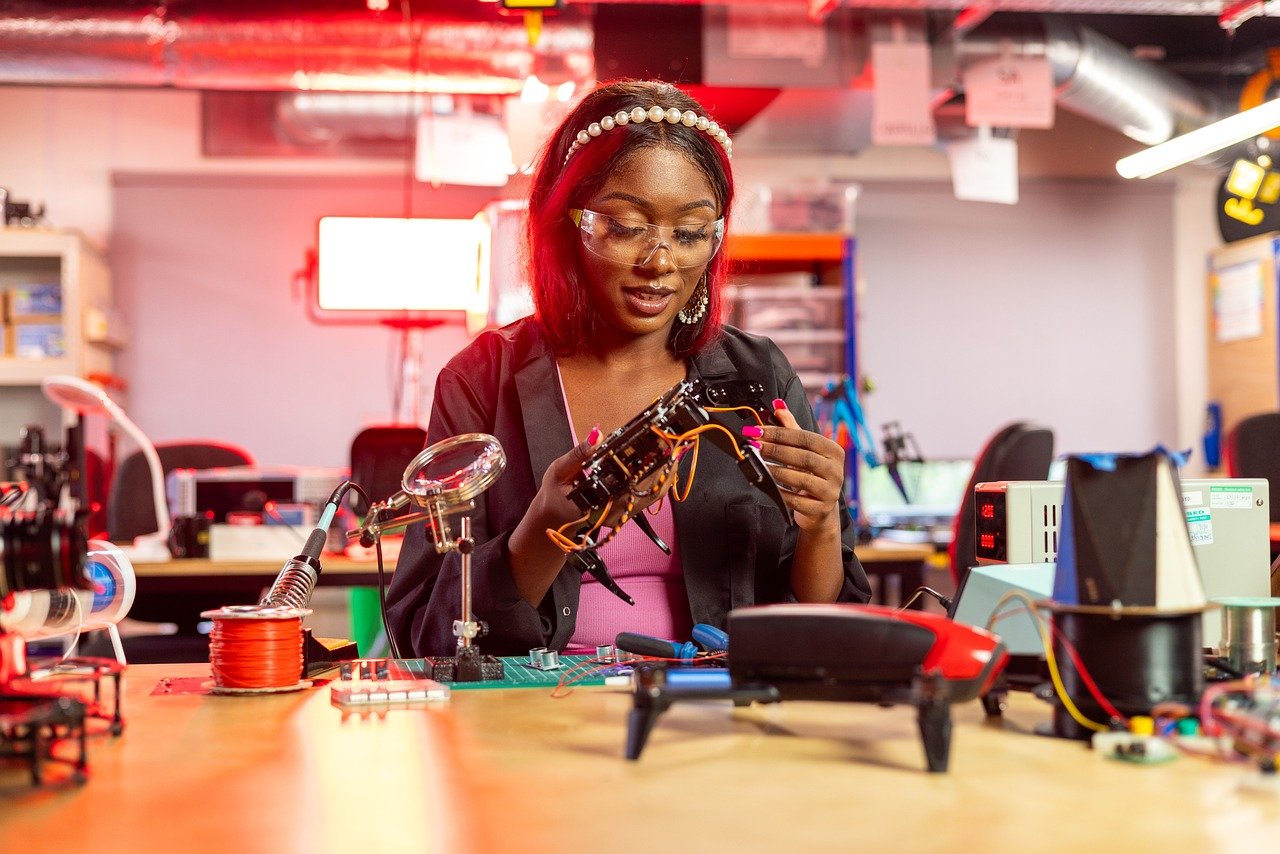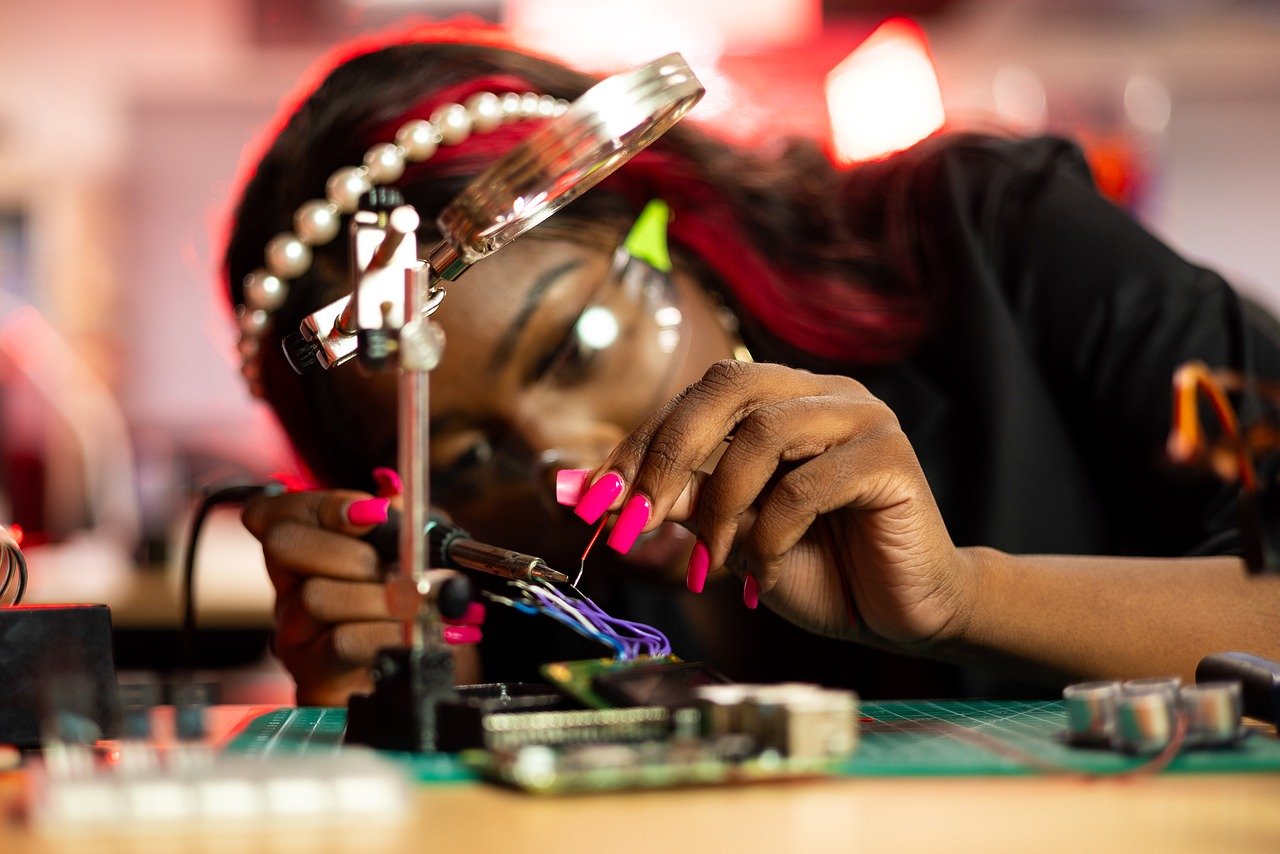The Threat of Deepfake Technology to Cybersecurity
In today’s digital age, the emergence of deepfake technology has sparked a whirlwind of excitement and concern. While it showcases the incredible capabilities of artificial intelligence, it also brings a dark cloud of potential threats to cybersecurity. Imagine a world where seeing is no longer believing; where videos and audio can be manipulated to create hyper-realistic fabrications that deceive even the sharpest eyes. This is the reality we face with deepfakes, and it has significant implications for individuals, corporations, and governments alike.
Deepfake technology utilizes advanced algorithms to generate realistic fake content, primarily through machine learning techniques. These algorithms can analyze vast amounts of data to create videos or audio recordings that mimic real people with astonishing accuracy. While this technology can be used for creative and entertainment purposes, it also poses severe risks that cannot be ignored. From identity theft to political manipulation, the potential for misuse is staggering.
As we delve deeper into the threats posed by deepfakes, it’s crucial to understand the various dimensions of this technology. The implications stretch far beyond mere entertainment; they touch on critical issues of trust, privacy, and security. For instance, consider how deepfakes can undermine personal privacy. By creating misleading representations of individuals, these technologies can lead to defamation, unauthorized use of personal images, and even identity theft. The ethical and legal ramifications are profound, prompting society to grapple with questions of accountability and consent.
Moreover, the corporate landscape is not immune to the threats posed by deepfake technology. Businesses are increasingly at risk from corporate espionage, where fake audio or video can impersonate executives, leading to unauthorized access to sensitive information. This could result in significant financial losses and damage to reputations. The stakes are high, and as the technology evolves, so too must our strategies for combatting it.
In response to these challenges, researchers and developers are stepping up their game. Advanced detection tools and algorithms are being created to identify manipulated content, helping organizations protect themselves from potential cyber threats. For instance, AI-based detection systems are being designed to analyze videos and audio for signs of manipulation. These tools are critical in the ongoing battle against the misuse of deepfake technology.
Public awareness and education play a vital role in combating the risks associated with deepfakes. It’s essential for individuals to be informed about the dangers of manipulated content and to develop critical thinking skills when consuming digital media. By fostering a more informed society, we empower individuals to scrutinize the content they encounter, reducing the likelihood of falling victim to deception.
As we look toward the future, deepfake technology presents both opportunities and challenges. While it can be harnessed for positive uses, such as in film and art, its potential for harm is undeniable. Understanding the trajectory of this technology will be crucial as we prepare for its impact on cybersecurity and trust in the digital realm. The question remains: how do we strike a balance between innovation and protection?
- What are deepfakes? Deepfakes are synthetic media in which a person’s likeness is replaced with someone else’s using artificial intelligence.
- How can deepfakes affect cybersecurity? They can be used for malicious purposes, such as impersonating individuals for fraud, spreading misinformation, or corporate espionage.
- What measures can be taken to combat deepfake threats? Organizations can employ AI detection tools, educate their employees, and foster a culture of skepticism towards unverified content.
- Are there legal consequences for creating deepfakes? Yes, there are growing legal frameworks aimed at addressing the misuse of deepfake technology, though they vary by jurisdiction.

Understanding Deepfake Technology
Deepfake technology is a fascinating yet alarming advancement in the realm of artificial intelligence. At its core, it uses machine learning algorithms to create hyper-realistic fake videos and audio recordings that can mimic real people with astonishing accuracy. Imagine seeing a video of a public figure saying something they never actually said, or hearing a voice that sounds exactly like your favorite celebrity delivering a message that they never recorded. This is the power of deepfakes, and while it can be used for harmless entertainment, it also poses significant challenges to authenticity and trust in digital content.
The technology behind deepfakes primarily relies on a technique called Generative Adversarial Networks (GANs). In simple terms, GANs consist of two neural networks—the generator and the discriminator—that work against each other. The generator creates fake content, while the discriminator evaluates it against real data. Over time, this back-and-forth process improves the quality of the generated content to the point where it becomes nearly indistinguishable from reality. This is where the danger lies, as the ability to produce convincing fake media can be exploited for malicious purposes.
As we delve deeper into the implications of deepfake technology, it's essential to consider how it affects various sectors. For instance, in the world of entertainment, deepfakes can be used to create realistic CGI characters or resurrect deceased actors for new films. However, this raises ethical questions about consent and the potential for exploitation. In the realm of politics, deepfakes can be weaponized to spread misinformation, manipulate public opinion, and even interfere with elections. The potential for misuse is vast, and as technology evolves, so do the methods of deception.
Moreover, the impact of deepfake technology extends beyond just individuals and politics; it also poses a significant threat to businesses. Companies face the risk of corporate espionage, where deepfake audio or video can impersonate executives, leading to unauthorized access to sensitive information. This kind of attack can result in substantial financial losses and damage to a company's reputation. As organizations become more aware of these threats, they must implement robust security measures to safeguard against deepfake-related attacks.
In summary, while deepfake technology can be seen as a remarkable achievement in artificial intelligence, it also brings forth a myriad of challenges that society must address. The line between reality and fabrication is becoming increasingly blurred, and understanding this technology is crucial for navigating the future. As we continue to explore its implications, one thing remains clear: vigilance and education are key in combating the potential threats posed by deepfakes.

Impact on Personal Privacy
In today's digital landscape, the emergence of deepfake technology poses a serious threat to personal privacy. Imagine waking up one day to find a video of yourself engaging in activities you never participated in, or worse, being portrayed in a compromising situation that could tarnish your reputation. This isn't just a fictional scenario; it's a reality that many individuals face due to the rapid advancements in artificial intelligence. Deepfakes can create misleading representations of individuals, leading to a myriad of issues including identity theft, defamation, and the unauthorized use of personal images or videos.
The implications of deepfakes on personal privacy are profound. When a malicious actor uses deepfake technology to fabricate a video or audio clip, they can manipulate the perception of reality. This can result in significant emotional distress for the victims, as well as tangible consequences such as job loss, social ostracism, and legal battles. For instance, consider the case of a person whose likeness is used in a deepfake video to promote harmful or illegal activities. Not only does this violate their personal privacy, but it also raises serious ethical and legal concerns that society must grapple with.
Furthermore, the potential for deepfakes to be used in revenge porn is another alarming aspect of this technology. Victims of such acts often find themselves fighting an uphill battle to reclaim their dignity and privacy. As deepfake software becomes more accessible, the risk of misuse increases, making it essential for individuals to understand how to protect themselves. Here are some of the ways deepfakes can invade personal privacy:
- Identity Theft: Deepfakes can be used to impersonate individuals, leading to unauthorized access to personal accounts and sensitive information.
- Defamation: Malicious actors can create false narratives that damage an individual's reputation, potentially leading to social and professional repercussions.
- Unauthorized Use of Images: Personal images can be manipulated and shared without consent, violating an individual's right to privacy.
In light of these threats, it is crucial to establish robust legal frameworks and societal norms to address the ethical implications of deepfake technology. As we navigate this new frontier, we must prioritize the protection of personal privacy and ensure that individuals have the means to defend themselves against such violations.
Ultimately, the rise of deepfake technology challenges our understanding of authenticity and trust in digital content. As individuals, we must remain vigilant and informed about the potential risks, while advocating for stronger regulations that protect our personal privacy in this ever-evolving digital age.

Case Studies of Deepfake Abuse
Deepfake technology has made headlines for its alarming potential to mislead and manipulate individuals, organizations, and even entire societies. The misuse of this technology can lead to devastating consequences, as highlighted by several high-profile incidents. These case studies not only illustrate the dangers of deepfakes but also underscore the urgent need for awareness and preventative measures.
One of the most notorious examples of deepfake abuse occurred during the 2020 U.S. presidential election. A video surfaced that appeared to show a candidate making inflammatory remarks. This fabricated content went viral, leading to widespread misinformation and confusion among voters. Despite being debunked, the damage was done—trust in media sources waned, and the incident fueled further division among the electorate. This case exemplifies how deepfakes can create false narratives that undermine democratic processes.
Another chilling instance involved the use of deepfake technology in the realm of revenge porn. Victims, often women, found their faces superimposed onto explicit videos without their consent, leading to severe emotional distress and reputational damage. This form of abuse not only highlights the ethical implications of deepfake technology but also raises serious questions about consent and personal privacy. Victims of such attacks often face challenges in seeking justice, as proving the authenticity of their claims can be incredibly difficult in a world where deepfakes are becoming increasingly sophisticated.
Moreover, the corporate world is not immune to the threats posed by deepfakes. In a notable case, a CEO's voice was replicated using deepfake technology to authorize a fraudulent transfer of funds. The attackers impersonated the executive during a phone call with a bank, successfully convincing them to release a significant sum of money. This incident serves as a stark reminder of the vulnerabilities that businesses face in an era where deepfake technology can easily be weaponized for corporate espionage.
These case studies reveal a troubling trend: the potential for deepfake technology to disrupt personal lives, tarnish reputations, and compromise security. As the technology becomes more accessible, the risk of abuse escalates, necessitating a comprehensive approach to address these challenges. It is essential for individuals, organizations, and policymakers to come together to create frameworks that can mitigate these threats and protect the integrity of information in our digital age.
- What is a deepfake? Deepfake refers to synthetic media in which a person’s likeness is replaced with someone else’s, often using artificial intelligence to create hyper-realistic videos or audio.
- How can I protect myself from deepfake abuse? Awareness is key. Be cautious about the content you consume and share, and consider using verification tools to check the authenticity of videos or images.
- Are there laws against deepfake technology? While some jurisdictions are beginning to implement regulations, the legal landscape surrounding deepfakes is still evolving, and comprehensive laws are needed to address various aspects of this technology.

Political Manipulation
In the digital age, where information spreads like wildfire, the emergence of deepfake technology has created a new frontier for . Imagine waking up to a video of a political leader making inflammatory statements that could sway public opinion overnight. Sounds like a plot from a sci-fi movie, right? But this is the reality we face today. Deepfakes can fabricate videos and audio that seem utterly real, making it incredibly challenging for the average person to discern fact from fiction.
These hyper-realistic creations can be weaponized to serve various agendas, often with dire consequences. For instance, during election cycles, deepfakes can be deployed to:
- Discredit opponents: By fabricating statements or actions that never occurred, deepfakes can tarnish the reputation of political candidates.
- Influence voter behavior: Misinformation can sway undecided voters, leading to skewed election results based on false narratives.
- Undermine public trust: As more people fall victim to deepfake misinformation, overall trust in media and political institutions deteriorates.
The implications are staggering. For example, a deepfake video of a candidate making a controversial statement could go viral before the truth has a chance to surface. This rapid spread of misinformation can create an environment of fear, confusion, and division among the electorate. A study by the MIT Media Lab found that false news spreads six times faster than true news on social media, highlighting the urgency of addressing this issue.
Moreover, the threat of deepfakes extends beyond just individual candidates. Entire political systems can be destabilized through strategic manipulation of public perception. Imagine a scenario where a deepfake is used to create a false narrative about a government’s foreign policy, potentially inciting international tensions. The ripple effects can be catastrophic, affecting not just a nation’s politics but its relationships on the global stage.
To combat these challenges, it is crucial for both political entities and the public to be aware of the existence and potential misuse of deepfake technology. Media literacy programs that educate citizens on how to identify manipulated content can play a pivotal role in safeguarding democracy. Furthermore, collaboration between tech companies and lawmakers is essential to develop robust regulations that can mitigate the risks posed by deepfakes in political contexts.
In conclusion, the rise of deepfake technology presents a formidable challenge to the integrity of political discourse. As we navigate this new terrain, vigilance, education, and proactive measures will be key in preserving the authenticity of our democratic processes.
- What are deepfakes? Deepfakes are synthetic media where a person's likeness is replaced with someone else's, often using artificial intelligence.
- How can deepfakes affect politics? They can spread misinformation, discredit candidates, and undermine trust in media and institutions.
- What can be done to combat deepfake technology? Increasing public awareness, enhancing media literacy, and developing detection technologies are crucial steps.

Corporate Espionage
In today's fast-paced digital world, the threat of has escalated dramatically, and deepfake technology has emerged as a potent weapon in this clandestine warfare. Imagine a scenario where a company’s CEO is impersonated through a hyper-realistic video or audio clip, making decisions that could lead to catastrophic financial losses or even legal repercussions. This isn’t just a plot from a futuristic thriller; it’s a very real possibility that businesses must now contend with.
Deepfake technology allows malicious actors to create convincing fake media that can be used to deceive employees, clients, and even law enforcement. For instance, consider a situation where a deepfake is used to simulate a phone call from a company executive, instructing an employee to transfer sensitive data or funds to an external account. Such scenarios can lead to significant breaches of trust and security, leaving organizations vulnerable to financial and reputational damage.
Moreover, the implications of deepfake technology extend beyond mere impersonation. It can be used to manipulate the perception of a company’s integrity. For example, if a deepfake video surfaces showing a company leader making disparaging remarks about a competitor, it could tarnish that company's reputation and sway public opinion—potentially leading to decreased sales and market share.
To illustrate the potential consequences of deepfake-induced corporate espionage, consider the following table that outlines the possible impacts:
| Impact | Description |
|---|---|
| Financial Losses | Unauthorized transactions or data breaches can lead to significant monetary losses. |
| Reputational Damage | False narratives can harm a company's image and erode customer trust. |
| Legal Consequences | Companies may face lawsuits or regulatory scrutiny due to fraudulent activities. |
| Operational Disruption | Deepfakes can cause confusion and miscommunication within an organization. |
Given these alarming possibilities, it’s crucial for organizations to implement robust security measures. This includes training employees to recognize signs of deepfake media, establishing verification processes for sensitive communications, and investing in advanced detection technologies. By fostering a culture of awareness and vigilance, businesses can better protect themselves from the insidious threat of corporate espionage fueled by deepfake technology.
In conclusion, the rise of deepfake technology presents a unique set of challenges for corporate security. As businesses navigate this new landscape, understanding the potential risks and implementing proactive measures will be essential in safeguarding their assets and maintaining the trust of their stakeholders.
- What are deepfakes? Deepfakes are synthetic media where a person's likeness is manipulated to create realistic videos or audio recordings that can mislead viewers.
- How can businesses protect themselves from deepfake threats? Businesses can protect themselves by educating employees, implementing verification processes, and investing in detection technologies.
- What are the legal implications of using deepfake technology? The use of deepfake technology raises complex legal issues, including accountability for misuse and the need for updated regulations.

Legal and Ethical Implications
As deepfake technology continues to advance, it brings with it a host of legal and ethical implications that society must grapple with. The ability to create hyper-realistic fake videos and audio recordings poses significant challenges to the existing legal frameworks designed to protect individuals and organizations. One of the most pressing issues is the question of accountability. Who is responsible when a deepfake is used to harm someone’s reputation or manipulate public opinion? Is it the creator, the platform that hosts the content, or the individual who shares it? These questions remain largely unanswered, creating a gray area in the law that can be exploited by those with malicious intent.
Furthermore, the concept of consent becomes murky in the realm of deepfakes. For instance, individuals may find their likeness used without permission in a deepfake video, leading to potential defamation and emotional distress. This raises serious ethical concerns about the use of personal images and videos, especially in contexts like pornography or misinformation campaigns. The lack of clear consent guidelines makes it difficult to navigate the ethical landscape surrounding deepfakes, leaving many individuals vulnerable to exploitation.
To illustrate the complexity of these issues, consider the following table that outlines some key legal challenges posed by deepfake technology:
| Legal Challenge | Description |
|---|---|
| Defamation | Deepfakes can damage reputations by spreading false information, leading to lawsuits and legal action against creators. |
| Privacy Violations | The unauthorized use of an individual's likeness can infringe upon their right to privacy, prompting legal repercussions. |
| Copyright Issues | Using someone's image or voice without permission raises copyright concerns, complicating intellectual property laws. |
| Regulatory Gaps | Existing laws may not adequately address the unique challenges posed by deepfakes, necessitating new regulations. |
In light of these challenges, there is a growing consensus that legislation must evolve to keep pace with technology. Some jurisdictions are beginning to draft laws specifically aimed at regulating the creation and distribution of deepfakes, imposing penalties for malicious use. However, the effectiveness of such laws remains to be seen, as enforcement can be difficult in the digital age.
Ultimately, the rise of deepfake technology necessitates a broader societal conversation about ethics and responsibility. As consumers of digital content, we must become more discerning and critical of what we see and hear. Educational initiatives aimed at improving media literacy can empower individuals to navigate this complex landscape, helping them to recognize deepfakes and understand their potential implications.
- What are deepfakes? Deepfakes are media created using artificial intelligence that manipulate audio and video to produce realistic but fake representations of people.
- How can deepfakes be misused? They can be used for various malicious purposes, including spreading misinformation, defamation, and identity theft.
- What legal protections exist against deepfakes? Legal protections vary by jurisdiction, but many laws regarding defamation, privacy, and copyright may apply.
- How can individuals protect themselves from deepfakes? Increasing awareness and education about deepfakes can help individuals critically evaluate the content they consume.

Technological Countermeasures
As the threat of deepfake technology looms larger in our digital landscape, it becomes increasingly crucial to explore effective that can mitigate its risks. Researchers and tech companies are stepping up to the plate, developing advanced detection tools and algorithms that can identify manipulated content. These innovations are not just a response to the deepfake phenomenon; they represent a proactive approach to safeguarding our digital interactions.
One of the most promising avenues in this fight against deepfakes is the use of artificial intelligence. AI-based detection systems are being designed to analyze videos and audio for signs of manipulation. These systems can scrutinize various elements, such as inconsistencies in facial movements, unnatural audio patterns, and even pixel-level anomalies that are often invisible to the naked eye. Imagine a digital detective, tirelessly examining every frame of a video, ensuring that what you see is indeed what you get.
For instance, some detection tools utilize machine learning algorithms that are trained on vast datasets of both real and fake content. By learning the subtle differences between authentic and manipulated media, these tools can flag suspicious material with remarkable accuracy. The beauty of this technology lies in its ability to evolve; as deepfake techniques become more sophisticated, detection algorithms can adapt and improve, creating a continuous cycle of innovation and defense.
However, it’s not just about creating detection tools. Public awareness and education play a pivotal role in combating the rise of deepfakes. By informing individuals about the existence and potential dangers of deepfake technology, we empower them to critically evaluate the content they encounter online. This could involve educational campaigns that highlight how to spot a deepfake, encouraging users to question the authenticity of videos and audio before sharing them. After all, an informed public is the first line of defense against misinformation.
Moreover, organizations can implement internal protocols that require verification of sensitive media before it is acted upon. For instance, companies might establish guidelines that mandate a secondary review for any audio or video communication that could lead to significant decisions. Such measures can prevent corporate espionage and protect sensitive information from being compromised by deepfake technology.
In summary, while deepfake technology poses a significant threat to cybersecurity, the development of advanced detection tools and a focus on public education are essential steps toward countering these risks. As we continue to navigate this complex landscape, staying informed and vigilant will be key to maintaining trust in our digital world.
- What is a deepfake? A deepfake is a synthetic media in which a person’s likeness is replaced with someone else’s, often using artificial intelligence to create realistic video or audio.
- How can I detect a deepfake? Look for inconsistencies in facial movements, unnatural audio, or pixel-level anomalies. There are also AI-based detection tools available that can help identify manipulated content.
- What are the legal implications of deepfakes? The rise of deepfake technology raises complex legal issues related to accountability, consent, and the need for updated regulations to address these emerging threats.
- How can organizations protect themselves from deepfakes? Organizations can implement internal protocols for verifying sensitive media and invest in advanced detection tools to safeguard against potential threats.

AI-Based Detection Tools
As deepfake technology advances, the need for robust becomes increasingly crucial. These tools are designed to analyze multimedia content—both video and audio—to identify signs of manipulation. Imagine having a digital watchdog that tirelessly scrutinizes every frame and sound byte, ensuring that what you see and hear is authentic. This innovative approach not only helps in identifying altered content but also plays a pivotal role in maintaining trust in digital communications.
At the heart of these detection systems lies sophisticated artificial intelligence algorithms that utilize machine learning techniques. By training on vast datasets of both genuine and manipulated media, these systems learn to recognize subtle discrepancies that might elude the human eye. For instance, they can detect irregularities in facial movements, inconsistencies in voice modulation, or even background anomalies that indicate tampering. In a world where misinformation spreads like wildfire, these tools act as a necessary line of defense against the potential chaos of deepfake misuse.
To illustrate the effectiveness of these AI-based detection tools, let’s consider a few key features:
| Feature | Description |
|---|---|
| Facial Recognition | Analyzes facial expressions and movements to detect unnatural alterations. |
| Audio Analysis | Examines voice patterns and tonal inconsistencies to identify synthetic speech. |
| Metadata Examination | Checks file metadata for signs of editing or manipulation. |
| Real-Time Monitoring | Provides live analysis of streaming content to catch deepfakes as they appear. |
However, the battle against deepfakes is not just about developing detection tools. It also involves continuous improvement and adaptation. As the technology behind deepfakes evolves, so too must the algorithms designed to detect them. This creates an ongoing arms race between those who create deepfakes and those who seek to expose them. Organizations are increasingly investing in research and development to stay ahead of the curve, ensuring that their defenses are not just reactive, but proactive.
Moreover, collaboration between tech companies, academic institutions, and government agencies is essential. By sharing knowledge and resources, stakeholders can enhance the effectiveness of detection tools and develop comprehensive strategies to combat the deepfake threat. The goal is not just to identify manipulated content but also to foster a culture of digital literacy, where individuals are equipped to critically assess the authenticity of the media they consume.
In conclusion, AI-based detection tools represent a beacon of hope in the fight against the malicious use of deepfake technology. By leveraging advanced algorithms and fostering collaboration across sectors, we can build a more secure digital environment, where authenticity reigns supreme and trust in media is restored.
- What are deepfakes? Deepfakes are synthetic media created using artificial intelligence, often used to produce hyper-realistic fake videos or audio recordings.
- How can AI detect deepfakes? AI detection tools analyze discrepancies in facial movements, voice patterns, and metadata to identify manipulated content.
- Are deepfake detection tools foolproof? While they are highly effective, no tool is 100% accurate, and continuous updates are needed to keep pace with evolving deepfake technology.
- What can individuals do to protect themselves from deepfake threats? Staying informed about deepfake technology and using verification tools can help individuals assess the authenticity of media.

Public Awareness and Education
In today's digital age, about deepfake technology are more crucial than ever. With the rapid advancement of artificial intelligence, the ability to create hyper-realistic fake videos and audio recordings has become alarmingly accessible. As a result, individuals need to be equipped with the knowledge to discern fact from fiction. It's not just about knowing that deepfakes exist; it's about understanding their implications and the potential risks they pose to personal and societal integrity.
Imagine scrolling through your social media feed and coming across a video of a public figure saying something outrageous. Your first instinct might be to share it with friends or comment on it. But what if that video was a deepfake? Without proper education on the subject, many people may unknowingly contribute to the spread of misinformation, which can have serious consequences. Education is the first line of defense against such threats. Schools, universities, and even workplaces should incorporate digital literacy programs that include lessons on identifying deepfakes and understanding their potential impact.
Moreover, public campaigns can play a significant role in raising awareness. Governments and organizations can collaborate to create informative content that highlights the dangers of deepfakes. This could include workshops, online courses, and social media campaigns aimed at educating the masses. For instance, a simple infographic explaining how to spot a deepfake could be shared widely, helping individuals become more critical consumers of digital content.
Additionally, fostering a culture of skepticism is essential. People should be encouraged to ask questions about the content they encounter. Is this video too sensational to be true? Who created it, and why? By promoting a mindset of inquiry, we can reduce the likelihood of deepfake manipulation affecting public opinion and personal beliefs.
In conclusion, as deepfake technology continues to evolve, so must our approach to education and awareness. It's not just about protecting ourselves; it's about safeguarding the integrity of information in our society. By prioritizing public awareness and education, we can empower individuals to navigate the digital landscape safely and responsibly.
- What are deepfakes? Deepfakes are synthetic media in which a person’s likeness is replaced with someone else’s, often using artificial intelligence to create hyper-realistic videos or audio.
- How can I identify a deepfake? Look for inconsistencies in facial movements, unnatural eye blinking, or audio that doesn’t match the lip movements. Tools and apps are also being developed to help detect deepfakes.
- What are the risks associated with deepfakes? Deepfakes can lead to misinformation, identity theft, defamation, and can undermine trust in digital media.
- What can be done to combat deepfakes? Public awareness and education are crucial, along with the development of AI-based detection tools and stricter regulations.

The Future of Deepfake Technology
As we look ahead, the evolution of deepfake technology is both exciting and alarming. On one hand, advancements in artificial intelligence and machine learning are making deepfakes more accessible and easier to create, which opens up a world of possibilities for entertainment, marketing, and education. Imagine a future where you can have a conversation with a digital version of your favorite historical figure or experience a movie where the characters are entirely generated by AI. However, this same technology poses significant risks that we must address to safeguard our digital landscape.
The dual nature of deepfake technology raises critical questions: How can we harness its potential for creative and constructive uses while simultaneously mitigating the risks it presents? As we navigate this uncharted territory, it's essential to consider the implications of deepfake technology across various sectors, including media, politics, and personal privacy. For instance, in the realm of media, deepfake technology could revolutionize content creation, allowing for more immersive storytelling. Yet, it also threatens to blur the lines between reality and fiction, making it increasingly difficult for audiences to discern what is genuine.
Moreover, the political landscape is particularly vulnerable to the misuse of deepfakes. With elections becoming battlegrounds for misinformation, the potential for deepfakes to create false narratives and manipulate public opinion is a growing concern. It’s crucial for governments and regulatory bodies to step up and create frameworks that can effectively address these challenges. This may include establishing guidelines for the ethical use of AI and investing in technologies that can detect and flag deepfake content before it spreads.
In terms of personal privacy, the future of deepfake technology poses serious ethical dilemmas. As individuals become more aware of the potential for their likeness to be misused, there may be a push for stricter regulations regarding consent and the use of personal images. This could lead to a paradigm shift in how we view digital content ownership and privacy rights. As we adapt to these changes, society must foster discussions on ethical standards that can guide the responsible use of deepfake technology.
To combat the potential negative impacts, researchers and tech companies are already working on developing advanced detection tools that utilize AI to identify manipulated content. These tools will play a vital role in maintaining trust in digital media. However, the battle against deepfakes is not just a technological one; it also requires a societal shift towards greater media literacy. Educating the public about the existence and dangers of deepfakes will empower individuals to critically assess the information they consume and share, ultimately leading to a more informed citizenry.
In conclusion, the future of deepfake technology is a double-edged sword. While it holds the potential to transform various industries and enhance our digital experiences, it also poses significant threats to privacy, security, and trust. As we move forward, it’s imperative that we strike a balance between innovation and responsibility, ensuring that the benefits of deepfake technology do not come at the cost of our safety and integrity.
- What are deepfakes? Deepfakes are hyper-realistic fake videos or audio recordings created using artificial intelligence, often designed to mislead or deceive.
- How can deepfakes be used positively? They can be used in entertainment, education, and marketing, allowing for innovative storytelling and immersive experiences.
- What are the risks associated with deepfakes? Risks include misinformation, identity theft, and erosion of trust in media, which can have serious implications for individuals and society.
- What measures are being taken to combat deepfakes? Researchers are developing AI-based detection tools, and there is a growing emphasis on public awareness and education regarding deepfakes.
Frequently Asked Questions
- What is deepfake technology?
Deepfake technology involves the use of artificial intelligence to create highly realistic fake videos and audio recordings. It can manipulate digital content in a way that makes it difficult for viewers to distinguish between what is real and what is not.
- How does deepfake technology threaten personal privacy?
Deepfakes can lead to serious privacy violations by producing misleading representations of individuals. This can result in identity theft, defamation, or unauthorized use of personal images and videos, raising significant ethical and legal issues.
- Can deepfakes be used for political manipulation?
Absolutely! Deepfakes have been used in political campaigns to create false narratives, which can undermine public trust in media and influence voter opinions through seemingly credible but fabricated content.
- What are some real-world examples of deepfake abuse?
There have been several high-profile cases of deepfake misuse, including incidents of political misinformation and revenge porn, which highlight the potential harm these technologies can inflict on individuals and society as a whole.
- How can businesses protect themselves from deepfake threats?
Businesses can implement advanced detection tools and algorithms designed to identify manipulated content. Additionally, educating employees about the risks associated with deepfakes can help mitigate potential threats.
- What measures are being taken to detect deepfakes?
Researchers are developing AI-based detection systems that analyze videos and audio for signs of manipulation. These tools are essential for organizations looking to safeguard themselves against the misuse of deepfake technology.
- Why is public awareness important regarding deepfakes?
Raising public awareness about deepfakes is crucial for fostering a more informed society. When individuals understand the potential dangers, they can critically evaluate the content they consume and share, reducing the likelihood of being misled.
- What is the future of deepfake technology?
The future of deepfake technology is a double-edged sword. While it presents opportunities for creative expression, it also poses significant challenges for cybersecurity and trust. Understanding its trajectory is vital for preparing society to mitigate its negative impacts.



















